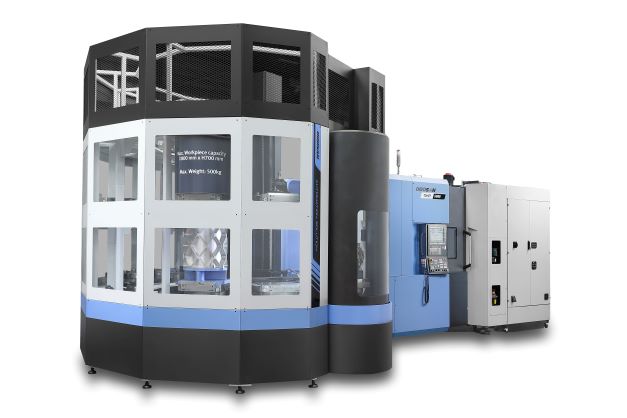Doosan Machine Tools: Multiply Machining Center Throughput With A Pallet System
Machine shops have reached a turning point (no pun intended) when it comes to automation. The move forward is driven by the need to produce precision parts faster while simultaneously facing a skilled labor shortage. Bar feeders and robots on turning centers are common examples of automation and have been around for a while. But the need for more sophisticated robotics is growing.
One of the easiest (and most cost-effective) ways to automate is to team your machining center with a pallet system. We turned to two Doosan Regional Sales Managers, Don Langley and Jim Slowinski, to give their takes on the subject. Both have extensive experience helping customers select systems that allow them to maintain on-time delivery schedules within the current workforce environment.
Palletizing Provides Profit
“It often takes some time to bring shop owners to the point where they recognize a pallet system as the answer to the problem,” Jim said. “For example, I was working with a small firearms manufacturer who wanted to increase production by buying three vertical machines for his day shift. I suggested that he could combine a palletized pool system with 2 HMCs and run unmanned all day and night with more production.

“With multiple vertical machines, depending on how your process is set up, you have to keep an eye on multiple operations and load and unload each machine as the cycles finish. By going horizontal, you’re potentially gaining access to multiple sides of your part by utilizing multi-faceted tombstones, not to mention a built-in pallet changer that basically cuts your load/unload times.
“Labor costs go down (assuming you can find operators in the first place) and you make more money with two horizontal spindles than you can with three vertical spindles.
“Bottom line, shop owners can get entrenched with the idea that more spindles are a better solution. It takes a while for some of them to develop that automation mindset, but it’s often the better option.”
Need Automation? Call Doosan.
“To this point, HMC pallet systems have relied on the RPS (rotary pallet system) mainly due to their compact size and lower initial investment cost,” Don said. “The RPS comes in configurations of 6 pallets and goes up to 21 pallets (3 layers of 7 pallets) vertically.
“But we also offer the LPS (linear pallet system), which is a modular system that starts with 12 pallets that can be expanded up to 72 and accommodate up to 4 machines. Not to mention the expandable tool magazines that can go up to 275 tools. The downside, of course, is the higher expense, plus a bigger footprint.
“When the simultaneous 5-axis DVF 5000 came out, we introduced the AWC (automatic work changer), which is really compact, sits on the side of the machine and is an economical way to get into automation for a vertical 5-axis. It takes up the same floor space whether it has 2, 4, 8, 12 or 18 pallets. Customers love this combination. We’re selling more and more of them. But as Jim said, it took a while.”

“And we can combine them now,” Jim said. “If you’re interested in putting a vertical 5-axis and a horizontal 4-axis on an LPS, you can do that and have pallets that are interchangeable between those machines.
“This allows you to use the HMC as a rigid production style machine for roughing, and then move the part to the 5-axis and do the finish detail work. You don’t have to take up the resources of other machines, and you’re still only fixturing once so it’s a more accurate part. Blending those two models really gives flexibility to industries that need it like automotive, medical, aerospace.”
Doosan Does It Right
According to Jim, Doosan is quoting more for automated systems these days. “A lot of it is the labor shortage,” he said. “Pallet systems allow shops to manufacture parts in an efficient way with minimal supervision.”
“Another reason is trust,” Don added. “There were a lot of third-party options available early on in the transition that didn’t work out so well. When something went wrong, it was hard to isolate whose fault it was. Customers today want to deal with an organization, like Doosan, that has a reputation for making quality equipment and standing behind it.”
This content was originally published on the Doosan Machine Tools website.

